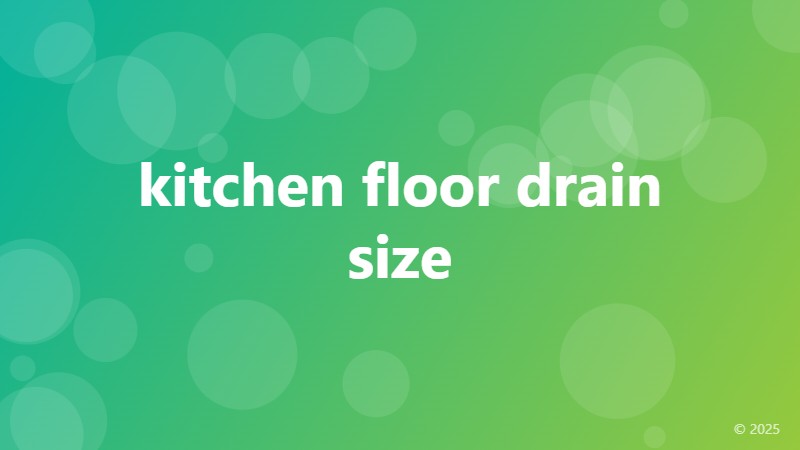kitchen floor drain size

Understanding Kitchen Floor Drain Size: A Comprehensive Guide
Kitchen floor drains are an essential component of any kitchen, serving as a safeguard against water damage and flooding. However, with various sizes available in the market, selecting the right kitchen floor drain size can be overwhelming. In this article, we will delve into the world of kitchen floor drain sizes, exploring the factors that influence their measurement and providing guidance on choosing the perfect fit for your kitchen.
Factors Affecting Kitchen Floor Drain Size
When it comes to determining the ideal kitchen floor drain size, several factors come into play. These include:
Drainage capacity: The rate at which water flows into the drain affects the size required. Higher flow rates necessitate larger drains.
Pipe size and material: The diameter and material of the pipes connected to the drain influence the size of the drain.
Kitchen layout and design: The shape and size of the kitchen, as well as the location of the drain, impact the size required.
Local plumbing codes and regulations: Compliance with local regulations and codes is crucial when selecting a kitchen floor drain size.
Standard Kitchen Floor Drain Sizes
While kitchen floor drain sizes can vary, there are standard sizes that are commonly used. These include:
2-inch drains: Suitable for small to medium-sized kitchens with low water flow.
3-inch drains: Ideal for medium-sized kitchens with moderate water flow.
4-inch drains: Recommended for large kitchens with high water flow or commercial kitchens.
Measuring for the Right Kitchen Floor Drain Size
To ensure you choose the correct kitchen floor drain size, follow these steps:
1. Measure the distance between the drain and the wall or any obstructions.
2. Determine the water flow rate by calculating the number of fixtures and appliances that will be using the drain.
3. Consult with a plumbing professional or refer to local plumbing codes to determine the recommended drain size.
Conclusion
Selecting the right kitchen floor drain size is crucial to ensuring a functional and safe kitchen. By considering the factors that influence drain size, understanding standard sizes, and measuring correctly, you can make an informed decision. Remember to always consult with a plumbing professional if you're unsure, and prioritize compliance with local regulations and codes.